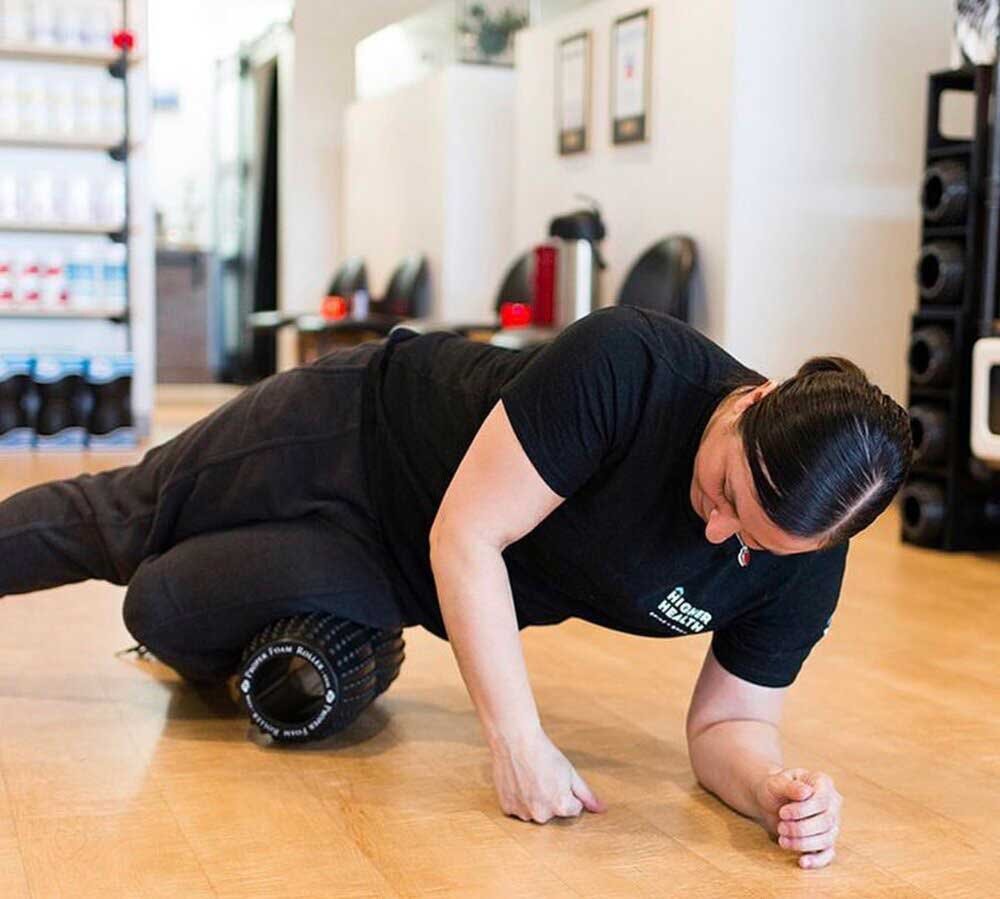Why Foam Rolling Should Be Part of Your Office Routine
Relieve stress and discomfort with this simple exercise
We all understand why it’s important to take care of our bodies after exercise. Without stretching, for example, our muscles would feel tight and painful. Our arms may ache or we may feel sore the next day. Sitting at a desk for prolonged periods of time at work can make demands on our body not unlike a workout, leading to muscular tension – up to 60% of American office workers suffer from pain in their backs, shoulders and necks. Tightness in our calves, which often goes hand-in-hand with running, may also appear from sitting still and not engaging the muscles for an extended time. When the average person spends up to 7 hours per day sitting, it is necessary that we relieve our muscles daily in the same way we would after exercise.
Taking breaks and using ergonomics in the workplace have both been shown to help reduce daily discomfort; however, incorporating stretching or foam rolling into your routine may help even more in mitigating muscular stress and preventing long-term negative effects.
What is Foam Rolling?
Foam rolling, also known as self-myofascial release or SMR, functions as a sort of massage by applying pressure to your muscles to reduce pain and stress. This pressure also helps separate muscle adhesions, where fibers have clumped together and lost their elasticity. Inexpensive and convenient, the practice can reduce inflammation, increase range of motion, flexibility and blood blow, and ease tension on your joints. It can be used after exercise to help shorten recovery time and, similarly, can help reduce the muscular stress brought on for sitting for long stretches of time.
Compared to sports massage or other physical therapy options, foam rolling is highly affordable with the cost of equipment starting around $20. It’s also portable, with rollers coming in a wide variety of sizes and requiring little space to use. Even better, foam rolling is easy after a little bit of practice. Short breaks at work can be made more effective by including foam rolling.
Benefits of Foam Rolling
As with stretching, the use of a roller can relieve stress on practically every area of your body. While office workers may most frequently complain of pain in their upper bodies, sometimes leading to headaches, sitting for long periods of time can also cause tightness in the legs and hips. With knowledge of the correct exercises, foam rolling can be used across problem areas making it incredibly versatile. Further, stressful days at work can lead to both physical and mental discomfort. Just as foam rolling can help relax muscles, it can also help relax your mind much like yoga or acupuncture.
Making time to improve your mental state can be especially important in rainy climates like Seattle’s, as bad weather has been shown to negatively affect our mood.
Beyond short-term benefits like pain reduction and improved blood circulation, consistent foam rolling can increase long-term flexibility and range of motion. Additionally, adding it to your routine can eventually reduce risk of injury as muscles are less stressed.
If you’re just starting to use foam rolling, the feeling of immediate relief may make it tempting to apply too much pressure too quickly. Instead, be cautious. Move slowly and gently and, if you feel pain, move away from that pressure point. Additionally, make sure to focus on your muscles – not your joints or ligaments.
let’s get rolling!
Higher Health Spine and Sport offers in-office workshops to demonstrate different exercises and further explore the benefits of adding foam rolling to your daily schedule. Attend an event to learn more and see how this simple routine can improve your health and comfort at work.




